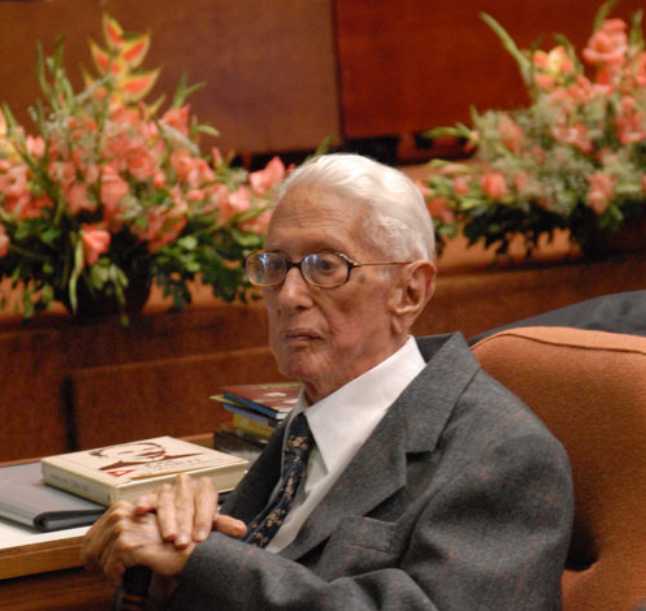4.1.2.9.13 The essay work of Cintio Vitier (1921 – 2009)

Cintio Vitier is one of the poets who has most explored the shaping substance of poetry and the very springs of his creative work. Therefore, his essay work is above all the embodiment of his vision of poetry; but conceptually intensified by a lucidity regarding the subject matter that is perhaps unprecedented in our history, as well as an everlasting fidelity to poetry as an infused gift.
In his essay “Mnemosyne,” 1947, which is part of the text “Poética,” he alludes to the role of memory as a source of poetry, also seen as a mirror of time that does not reflect what happened as it is, but rather a reminiscence, now with a poetic halo that is ultimately another face of what exists. Another of his relevant texts in this regard is “La palabra poética,” 1953, which shows that for Cintio, all lyricism ultimately resides in reality.
From 1957, a fertile period in which he announces the advent of a transmutation of reality, also with poetic consequences, is his text “The Light of the Impossible”, in which he delves into his motives, given by what can be called the strangeness of reality, which the poet incorporates and considers within the natural due to its assimilated supernaturality, but with which he establishes an intimate connection.
He had already pointed out some of these issues in “Experience of Poetry,” in which he also alludes to the imprint of Juan Ramón Jiménez’s poetics on his own work and delves into the binding reality that underlies his poetics, which is also a hymn to his surroundings and his own existence, the fact of being, in some way, lyrical flesh.
His most important text in this regard is “Cuban Identity in Poetry,” published in a defining year like 1958, in which he posits the union between poetry and history as essential for an eminently national poetic configuration with pristine aesthetic qualities.
Already during the revolutionary period, he compiled and wrote the prologues for two anthologies, containing theoretical elements and critical insights, on the themes captured in the titles “The Best Cuban Poems” (1959) and “The Great Cuban Romantics.” Along the same lines were “Successive Criticism” and “Cuban Criticism,” published in 1971 and 1988, respectively.
Beyond the texts and elements that have been offered as brushstrokes, all of Cintio Vitier’s essay work coincides in promulgating his love of knowledge and beauty, the fusion of which ultimately oriented all his creative activity and, even more so, his essay writing, insofar as it allowed him to objectify the springs of his creative activity, in a profound connection with the hidden roots of Cuban identity.








